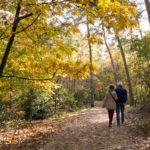Early days
Approximately 3km long, the Singapore River has been present since the early beginnings of Singapore and has played a central role in the country’s development. Sir Stamford Raffles (“Milestones of Singapore – Our Story”) who founded Singapore in 1819, saw the potential trading and commercial opportunities the river afforded and made Singapore a British trading outpost. The river served as a port and was filled with economic activity, attracting many migrants to settle down and work along the quay. The increase of shipping trading also led the city to flourish as an entreport in Southeast Asia. At the same time, the river became heavily congested and polluted from the increasing trade and both urban and industrial growth.
Trading activity shifted to Keppel Harbour in the 1970s when the Singapore River could no longer accommodate the rapid increase in commerce. There were also better facilities and deep-water berths at Keppel Harbour.
Major clean-up: 1977-1986
In 1968, the government under Prime Minister Lee Kuan Yew passed a strict act to persecute those who polluted the rivers. A year later, Prime Minister Lee called on both the Public Works Department and Public Utility Board (“Milestones of Singapore – Our Story”) to work on a plan together to solve the environmental problems in the rivers in Singapore. In the same year, boat-builders, businesses and individuals were given notice to be relocated from the river.
In 1977, Prime Minister Lee gave the relevant government departments 10 years to clean up the Singapore River and Kallang Basin, an indication of the seriousness and urgency of the matter. The main objective of the project was to ensure water quality was restored such that it was fit for aquatic life.
In the 1980s, plans were underway to deal with the environmental damage to the Singapore River. The government started ‘The Clean Rivers Education Programme’ in 1987 to transform the Singapore River and Kallang River Basin into vibrant rivers, and to encourage the community to keep the waterways pollution free. School students were shown videos about the polluting effects of dumping refuse into drains and canals.
The government faced a big challenge of relocating the population by the river. The Housing Development Board (HDB) (“Milestones of Singapore – Our Story”) was in charge of this humongous task. Despite the reluctance of the population to move, even after being offered housing and compensation to minimise the inconveniences, the government still proceeded with the resettlement. Resettlement was completed by 1986, with majority of the population moving into public housing and hawkers moving into food centres built by HDB. Bumboats ferrying goods were also shifted to Pasir Panjang by the Port of Singapore Authority (PSA).
A new Singapore River
It took the government 10 years and a huge clean-up cost to clean up the Singapore River, but the benefits were worth the investment. After the massive task of cleaning up, river walls were rebuild and old buildings have been conserved to preserve the memories of the river. New commercial and entertainment buildings have been constructed as well. Today, the river is a vibrant spot, filled with a mix of nostalgia and modern entertainment. Locals and tourists can learn more about the history and evolution of the Singapore River by embarking on the Singapore River Walk trail, launched by the National Heritage Board. The 2.8km self-guided walk stretches from Collyer Quay to Robertson Quay and features historic buildings ( “6 Historic Monuments Worth visiting”), places of worship and bridges.
References
National Library Board eResources
Singapore River (Website)
Singapore River / YourSingapore (website)
The Singapore Water Story by Ms Cecilia Tortajada, Yugal Joshi and Asit Biswas










